| CLICK HERE FOR INDEX PAGE |
| CENTRE OF GRAVITY / CENTRE OF ROTATION / POINT OF ROTATION |
| V. Ryan © 2010 |
| PDF FILE - CLICK HERE FOR PRINTABLE WORKSHEET |
|
The centre of gravity of an object is generally understood, as the centre of the object’s weight distribution. This means that if an object can rotate around its centre of gravity, it will balance at that point. |
| The acrobat’s shoes are glued to a platform. The weight of the acrobat and the weight of the counter balance, are equal. This means that the centre of gravity (also centre of rotation) can be found in the centre of weight distribution. |
| If the acrobat leans to the right, the entire platform and balancing weight will rotate, until balancing around its centre of gravity / centre of rotation. |
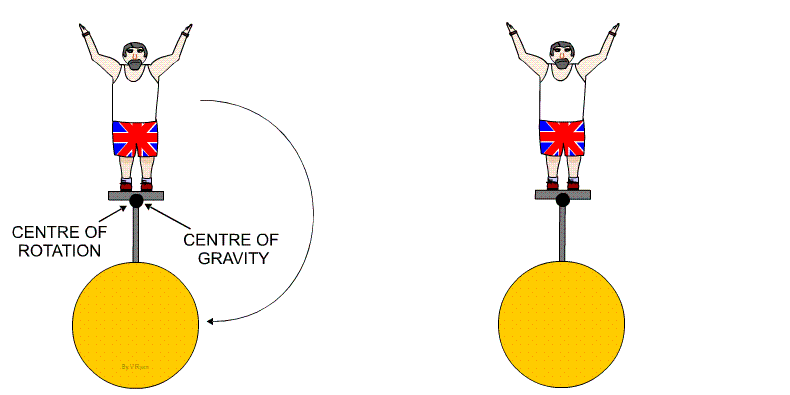 |
| The whole arrangement will end up in an horizontal position, because the left-hand side and right-hand side, weigh the same and balance. |
| If the balancing weight is increased, the
centre of rotation and centre of gravity moves to a new ‘balancing’
position. However, if the balancing weight, acrobat and platform, are
forced to rotate round a large steel bolt, in a fixed position, it is
possible to ensure that the weight always ends up below the acrobat. This
is because, the weight is heavier than the acrobat and the centre of
gravity is below the fixed centre of rotation. The point at which the acrobat, platform and weight rotates is now called the ‘fixed point of rotation’. It is not the centre of gravity. |
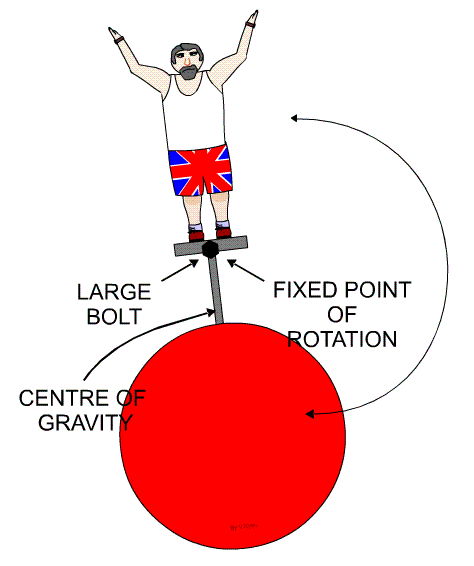 |
| FINDING THE CENTRE OF GRAVITY |
| The centre of gravity of an object can be found quite easily. A piece of string, with a weight on the end (called a plumb line), is suspended from any point on the edge of the object. A drawing pin can be used to hold the string in place. A vertical line is draw, level with the string. The object is then rotated slightly and the same procedure followed. Where the lines cross, is the centre of gravity. Follow the procedure a third time, to confirm the position of the centre of gravity. |
| The bird drawn below, is part of a
balancing toy. If the centre of gravity is found and used as the centre of
rotation, the toy should balance. With balancing toys of this type, it is often a good idea to have the centre of gravity slightly below the position of the steel rod ( the fixed centre of rotation). |
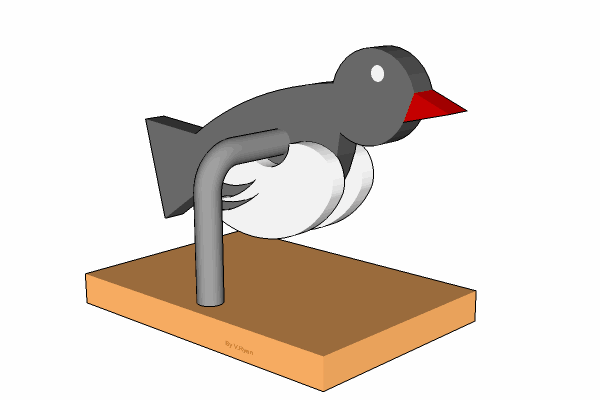 |
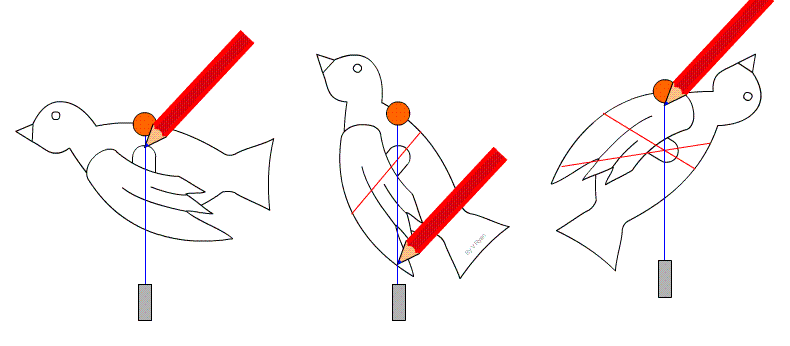 |
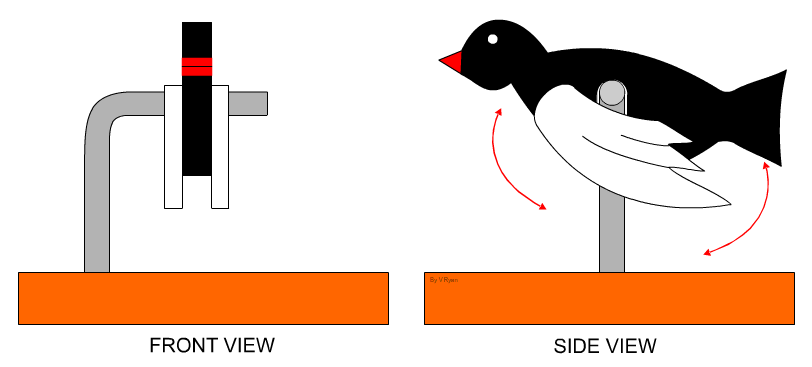 |
| CLICK HERE FOR FORCES AND MOMENTS INDEX PAGE |